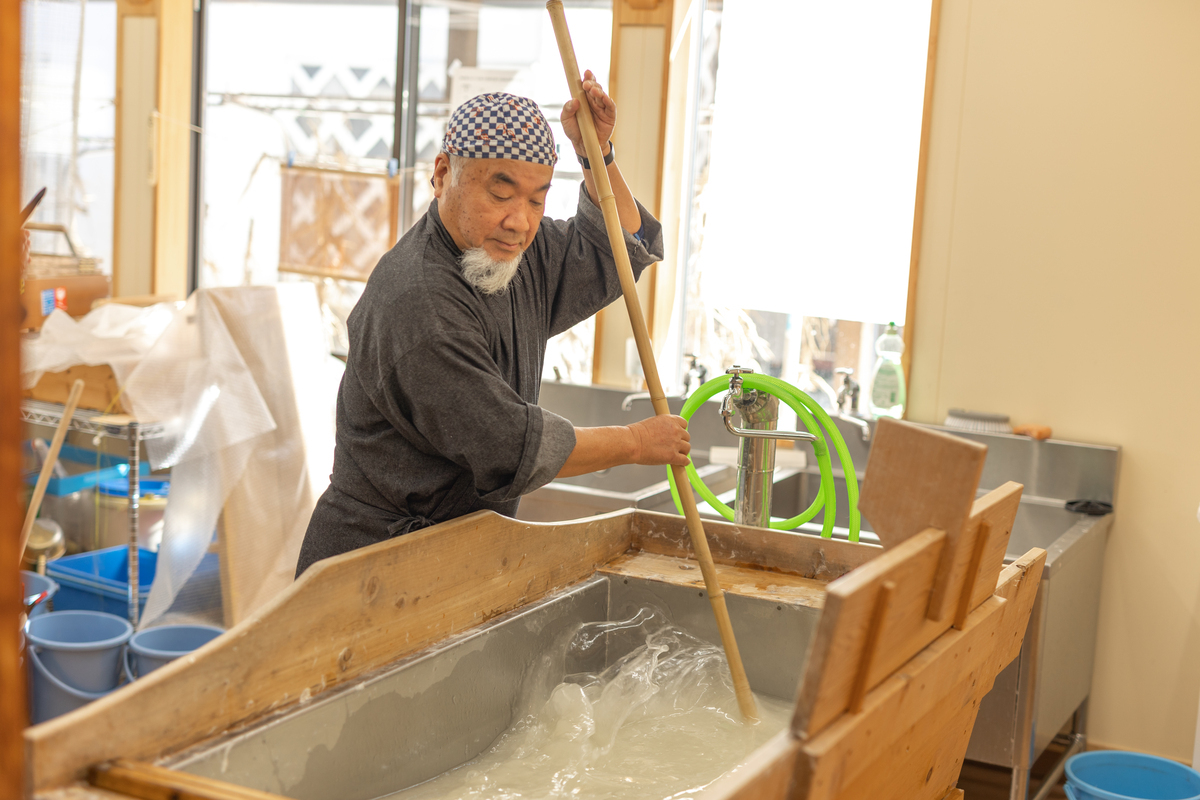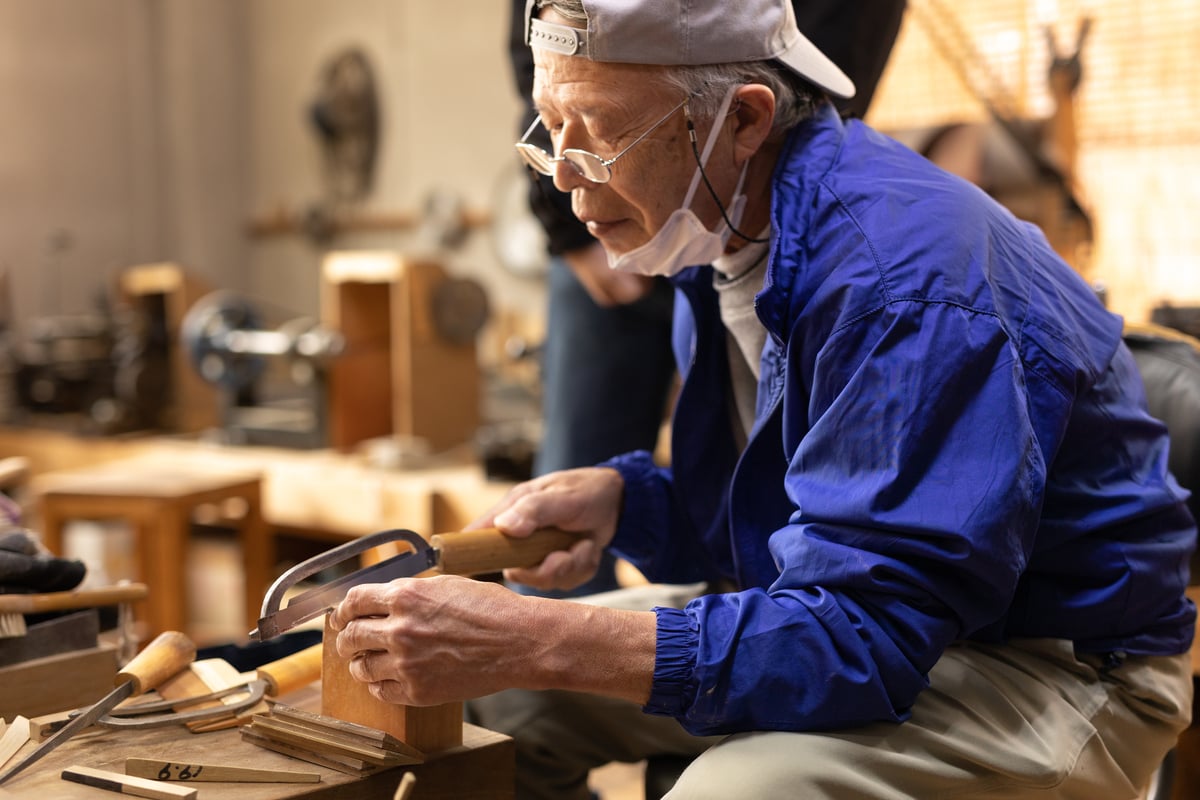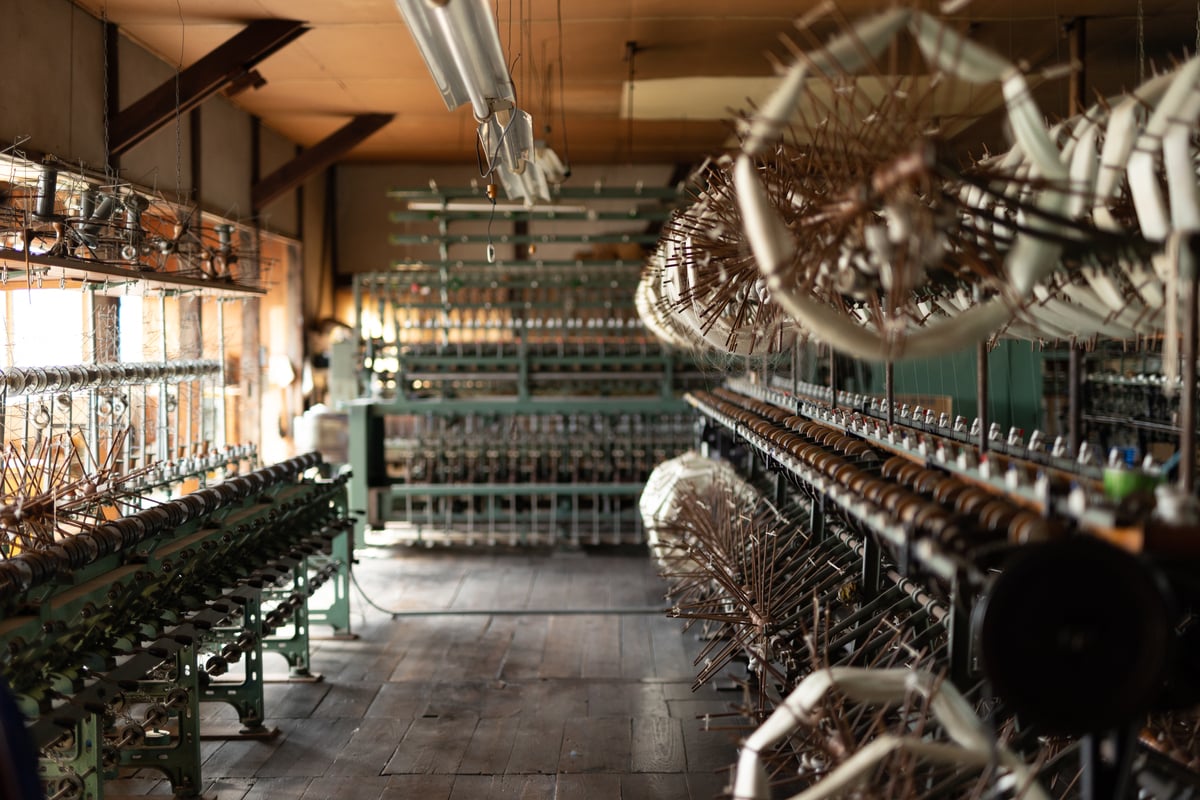
In the area around the old Nakasendo path in Nagano Prefecture, also known as "Hime Kaido". There are many traditional crafts, which is born from the handiwork of farmers, have been continued. Among them, this time we will introduce Ina tsumugi from the Kamiina region.
The history and culture of Ina tsumugi began with the cloth woven by women for their families.
Located in the southern part of Nagano Prefecture, the Ina Valley is surrounded by the Southern Alps to the east and the Central Alps to the west. Even in Nagano, where the cold is severe, this area is blessed with a relatively mild climate and boasts the largest amount of mulberry production in the prefecture. Thanks to this, the sericulture and silk industry prospered and the area become known as "the country of silkworms, the country of silk".
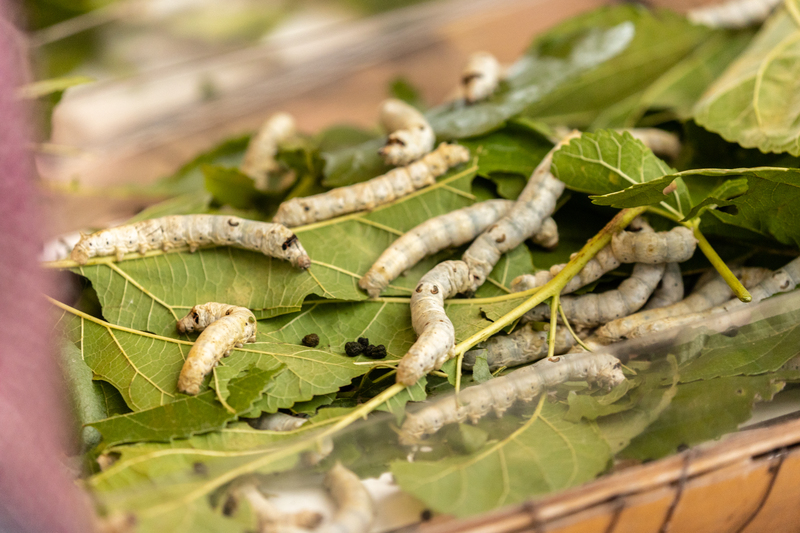
It was during the Edo period that the sericulture and silk industry in the Ina Valley began to flourish. As each domain in Nagano encouraged sericulture, the production of silkworm cocoons and silk fabrics flourished as a side business for farmers.
However, while high-quality cocoons are shipped to metropolitan areas such as Kyoto and Nagoya, cocoons with holes are considered defective and cannot be distributed to the market. Therefore, the local women used the defective cocoons and carefully wove them by hand to make rolls of cloth for their families. It is said that this is the beginning of Ina tsumugi.
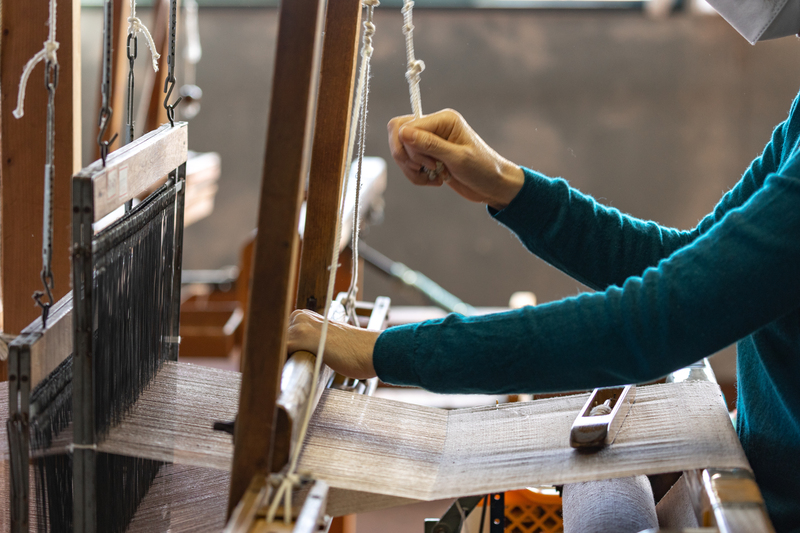
Additionally, by taking advantage of the area's abundant nature surrounding the foothills of the Southern Alps and the Central Alps, locals developed vegetable dyeing techniques, which uses naturally occurring trees and plants, such as yamazakura and larch, as dyes.
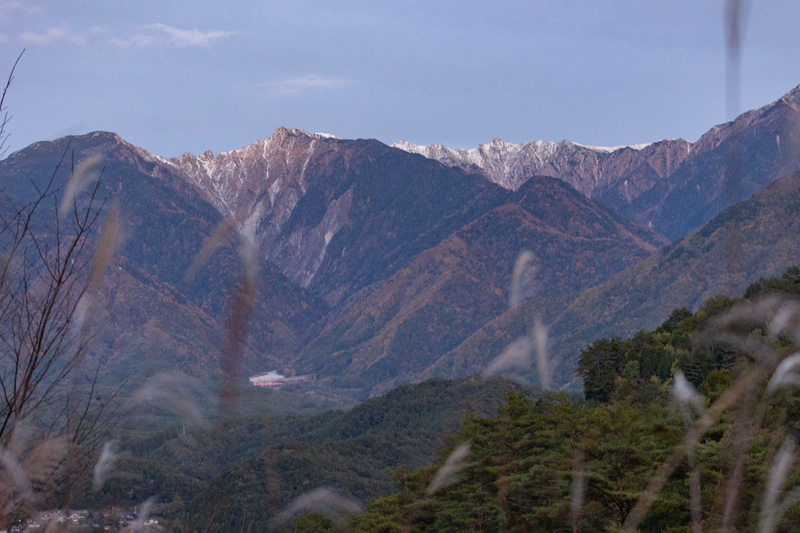
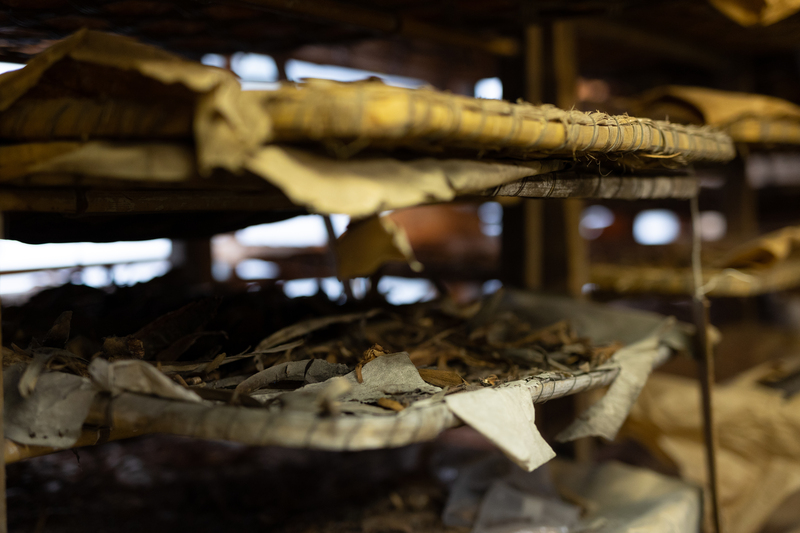
Kubota Textile Industry Co., Ltd, the Only Textile Manufacturer that has Inherited the Tradition of Ina Tsumugi
At its peak, Ina tsumugi was produced in more than 120 factories. However, only one weaver remains today – Kubota Textile Industry Co., Ltd, founded in 1910.
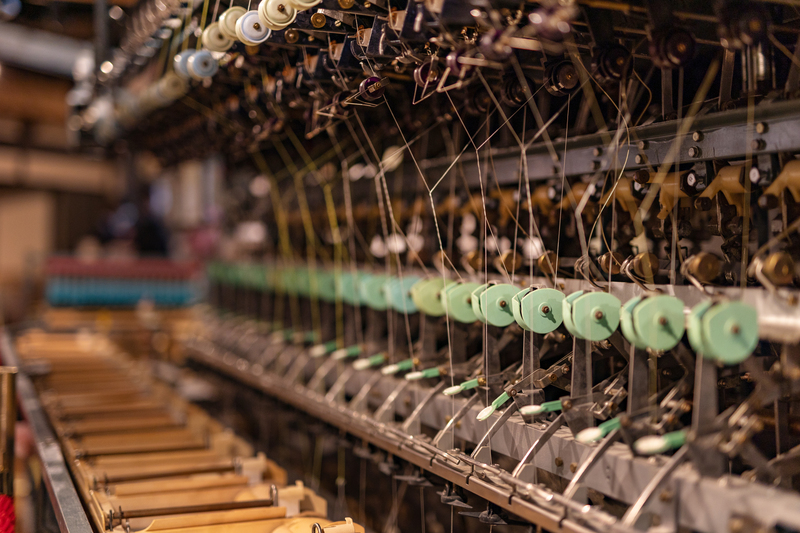
Kubota Textile Industry Co., Ltd. has an integrated manufacturing process from thread making to dyeing and weaving. Because each piece is made, dyed, and woven by hand, even similar colors and patterns have slightly different textures.
Natural features rooted in the land and technology have been handed down for over 100 years. The silk fabrics produced from this process are one-of-a-kind items that are soft to the touch, have a fluffy texture, and are clad in tasteful colors.
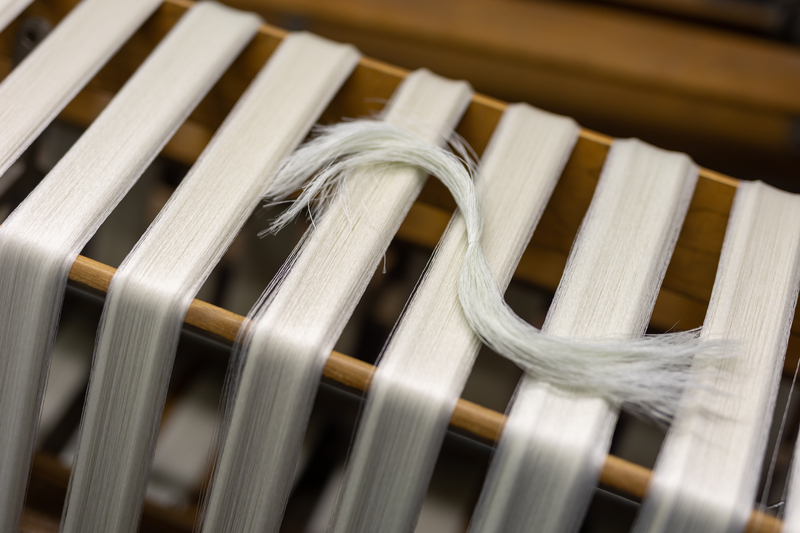
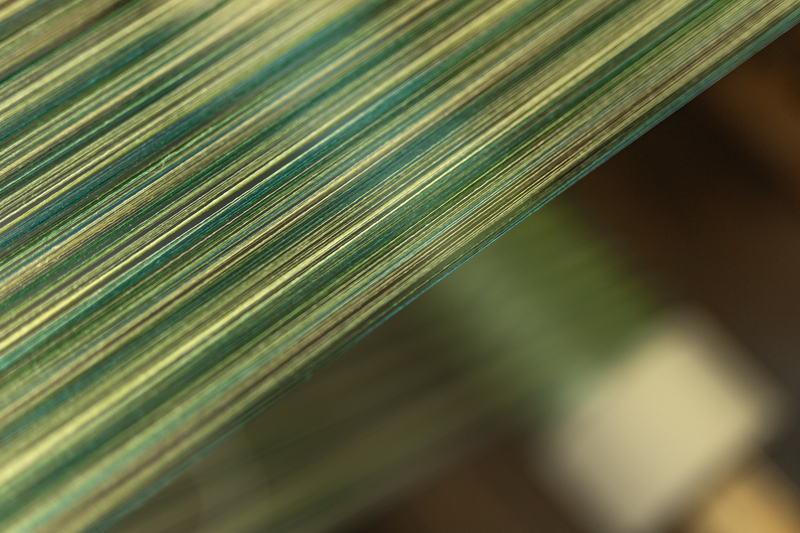
This time, we interviewed Mr. Takayuki Kubota, senior managing director, and Mr. Haruhide Kubota, the third generation representative of Kubota Textile Industry Co., Ltd.
The third generation has carried on the tradition of Ina tsumugi, and the fourth generation will create its future.
We talked to Mr. Takayuki Kubota first. He talked about the future of Ina tsumugi, from the scenery of his childhood to the real pleasure of his work.
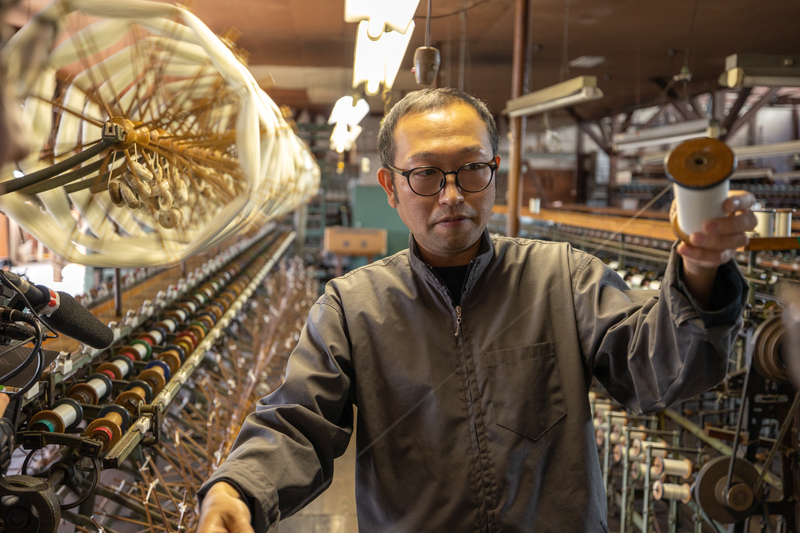
ーーWhen you were young, what kind of memories do you have about your family business, Ina Tsumugi?
Mr. Takayuki: When I was little, I used to play in the factory a lot. I remember thinking that the machines were very loud and I remember being scolded by the old weaving lady, saying, “Don't run around!” Then, on the other hand, I sometimes received candy balls. I have many memories there.
ーーWhy did you decide to take over your family business?
Mr. Takayuki: Actually, I didn't have such a strong determination to take over the business. Even my father, the third generation, never asked me to take over. However, when I moved to Tokyo and worked in the service industry, I began to worry about the family business. After working for a while, I made a U-turn and eventually took over.
ーーHow do you view the third generation president?
Mr. Takayuki: Of course, there are many things that I admire. For example, when he thought of an idea he wanted to try, he would move forward and make it happen. He came up with innovative ideas and actively took on new challenges. Among the fabrics that have recently been developed mainly for autumn and winter, I am trying to create thin summer products. I would like to emulate his can-do attitude.
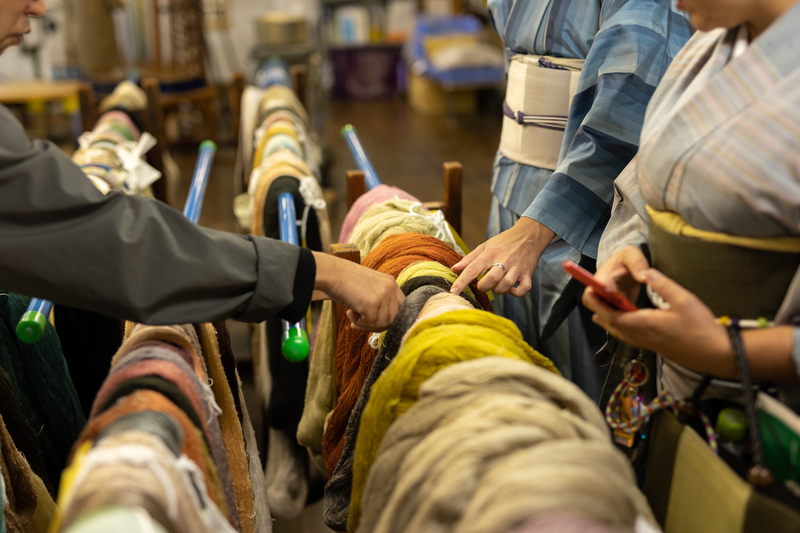
ーーTakayuki-san, what kind of work are you doing now?
Mr. Takayuki: Kubota Textile Industry Co., Ltd. has a division of labor system. There are various craftsmen such as those who make warp threads and those who weave cloth with a loom. Among them, I am in charge of processes such as making threads and dyeing. Also, I work as a salesman; my job is to engage in business negotiations with customers and wholesalers to obtain orders.
Although it can be difficult at times, it is a lot of fun to create things with friends I know well and think about what colors to dye the thread. At sales events and other occasions, some people wear kimonos that they have made with great care. Seeing customers like that makes me very happy.
ーーPlease tell us about the future of Ina tsumugi.
Mr. Takayuki: In Japan, the kimono industry gradually declined after the war. It's a small industry now, and western styled clothes are certainly more convenient for everyday life. It will probably never return to the big industry it once was. However, I don't think we should let this tradition end. I don't want people to wear a kimono every day, but I want them to enjoy the charm of kimono by wearing it for special occasions and events. Of course, everyone is also very welcome to visit our factory. See, learn about, enjoy, and be amazed at the process of actually making silk fabrics, and remember as much about Ina tsumugi as possible.
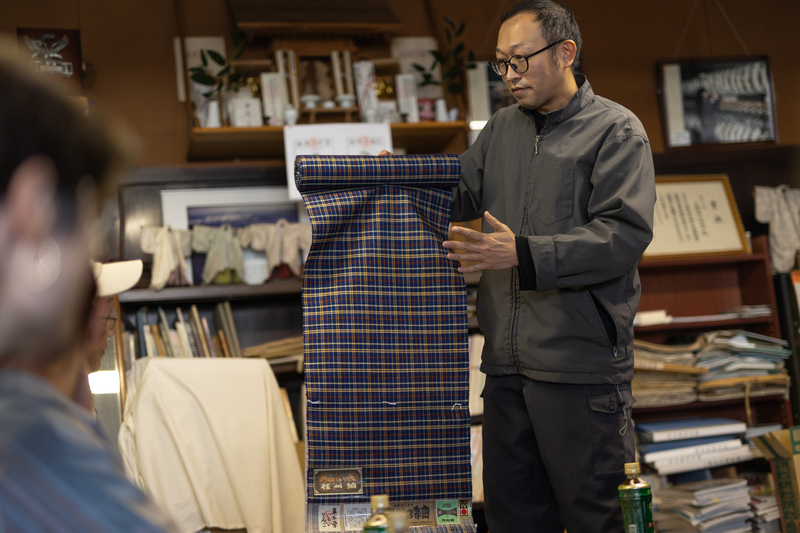
Next, we interviewed Mr. Haruhide Kubota, the third generation representative of Kubota Textile Industry Co., Ltd. He talked about Ina tsumugi's past and future.
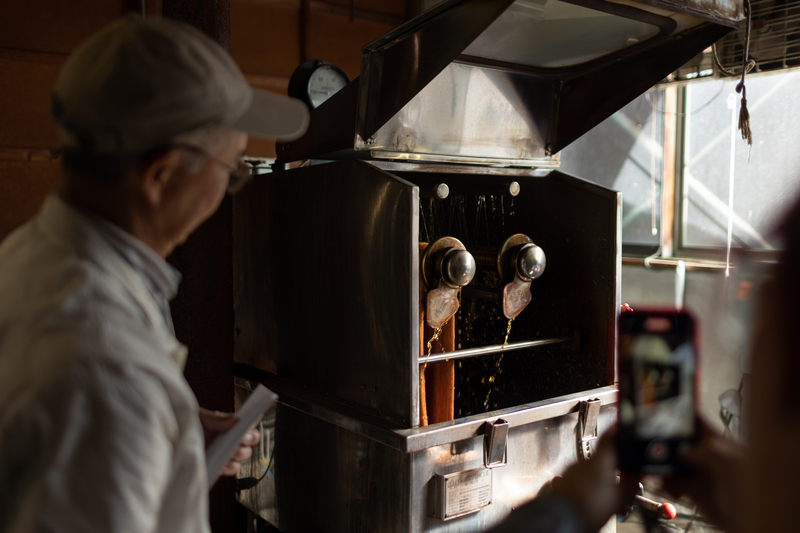
ーーMr. Haruhide, since when have you been working with Ina tsumugi?
Mr. Haruhide: I have been involved with Ina tsumugi since 1970. At that time, my father took over the family business from my grandfather.
ーーLooking back on the history of Ina tsumugi, what do you think of it?
Mr. Haruhide: When you hear the phrase “passing on traditional culture,” you may have the image of doing the same work for a long time. However, we have updated the things that should be changed according to the times. While maintaining our commitment to making silk fabrics, we have always challenged ourselves with trial and error in manufacturing and dyeing methods and developing new products.
ーーYour son, Mr. Takayuki, has also returned to the family business. How do you feel about that?
Mr. Haruhide: I am very grateful. When thinking about the next 10 or 20 years from now, there must be things that younger people should think about. I have high hopes for my son in that respect. I myself would like to support my son so that he can develop Ina tsumugi while valuing his own way of thinking and ideas.
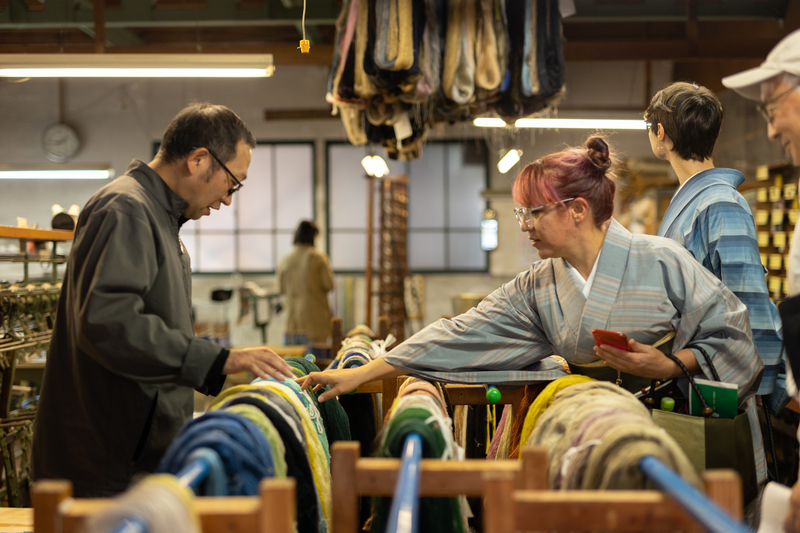
ーーLastly, what do you think is the charm of kimono?
Mr. Haruhide: I believe that the kimono is the kind of clothing that best brings out the beauty in women and emphasizes the charm of men. Since it is more expensive than Western clothes, the occasions in which you can wear it may be limited, but we would like you to try wearing them on special occasions.
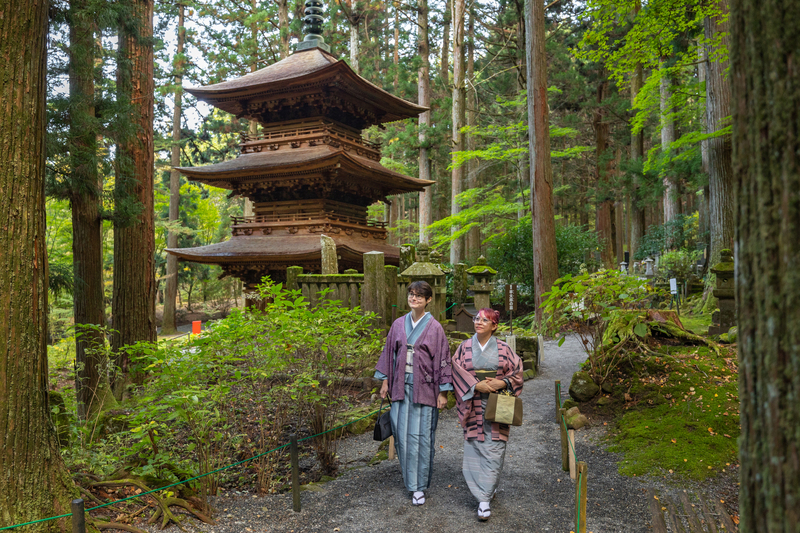
Summary
Ina tsumugi is a traditional craft that has continued in Ina Valley for over 110 years. Come and visit to experience the delicate handwork and the beauty of the kimono.

